Master Your Sales Mindset: 10 Proven Behaviors
A recent study revealed that 67% of salespeople agree that they’re either close to or are currently experiencing burnout. This is where cultivating a sales mindset can help.
This article will provide an overview of the key components of a sales mindset, share a handful of tips on how to adopt one, and recommend a number of tools to help sales professionals adopt this mental framework.
Here’s what we’ll cover:
- What Is a Sales Mindset?
- How to Adopt a Positive Sales Mindset
- 10 Behaviors to Master Your Sales Mindset
- How to Overcome Rejection or Setbacks in Sales
- How to Leverage Yesware to Enhance Your Sales Mindset
- FAQs
What Is a Sales Mindset?
A sales mindset encapsulates how sales professionals approach their roles, not just in terms of selling products or services but in how they handle challenges, develop relationships, and grow. It’s the mental framework that drives a sales professional’s attitude, motivation, and behavior in both successful and challenging moments.
Key characteristics of a strong sales mindset are as follows:
- Confidence in your product, your sales pitch, and your ability to deliver solutions give customers the reassurance they need to make buying decisions.
- Resilience and adaptability help you adjust your sales strategy and sales tactics even in the face of failures and empower you to learn from each experience.
- Focus on achieving results helps you to stay motivated, push through obstacles, and keep your eyes on the rewards that will crown your efforts.
- The customer-centric approach helps you deal with the dehumanizing effects of the sales industry.
Positive Mindset
One important component of a sales mindset is a positive mindset.
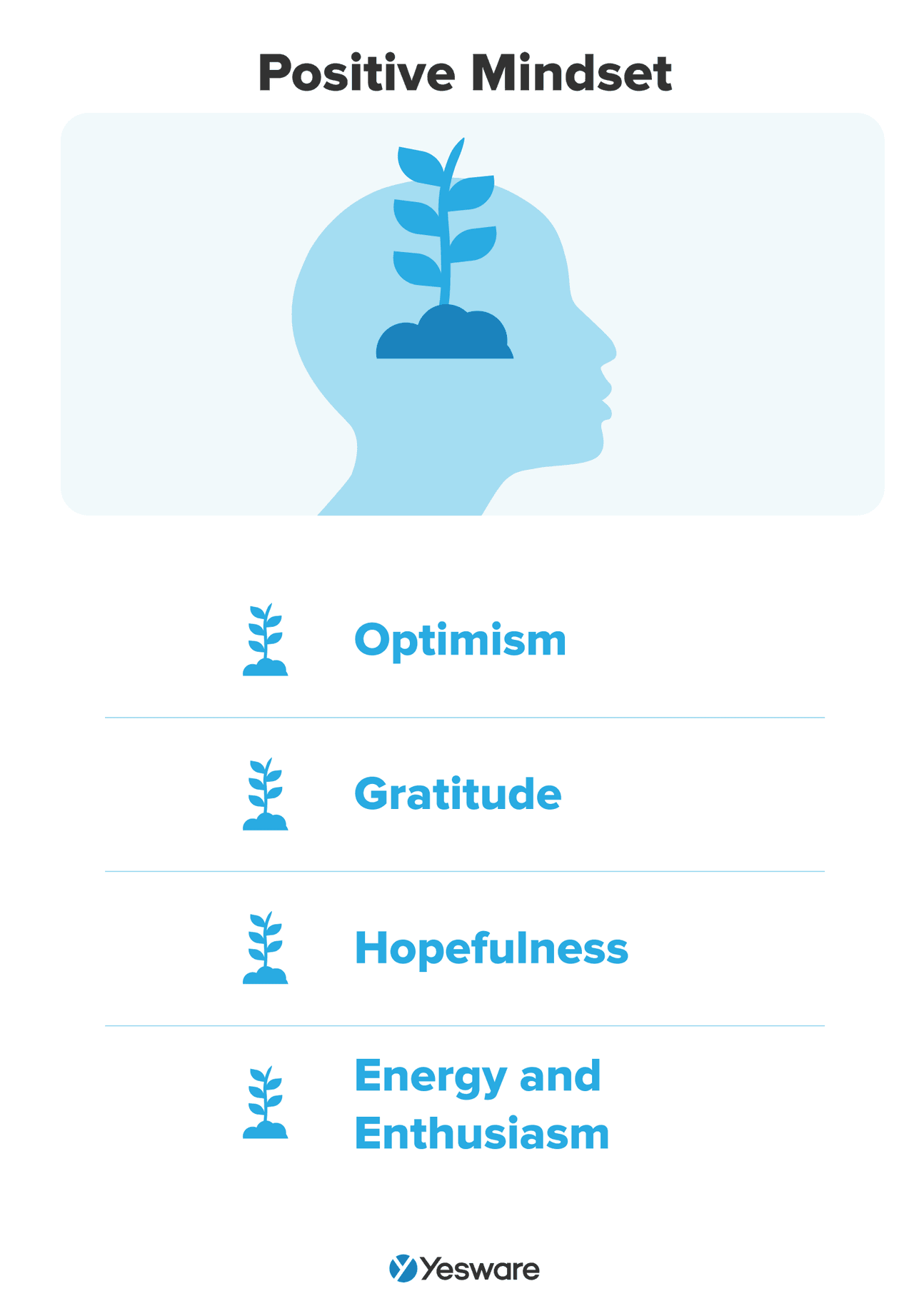
Let’s take a look at an example of a positive mindset in action.
Imagine a sales professional, Kate, who’s had a tough quarter, missing her target by a wide margin. Instead of feeling defeated, Kate maintains the belief that she can turn things around next time.
Kate is grateful for any life lessons she may have learned and any new connections she may have fostered. Kate is full of energy to dive right into the next quarter and do her best to meet her goals this time.
Why Is It Important to Have a Positive Mindset in Sales?
Positive thinking was held in high esteem by the best thinkers in ancient eras. For example, here’s a powerful quote by a Taoist philosopher, Lao Tzu, that celebrates the power of positivity: “Be content with what you have; rejoice in the way things are. When you realize there is nothing lacking, the whole world belongs to you.”
Here are a few stats that demonstrate how a positive mindset in sales helps improve performance:
- Sales professionals with a positive attitude outsell those without this secret weapon by 56%.
- 70% of buying decisions are influenced by how customers evaluate the sales professionals’ attitude toward them.
The data suggests that when sales representatives and managers approach interactions with a positive mindset, they are more likely to treat customers well, which in turn influences the buying experience positively. This positive treatment can lead to stronger customer relationships.
In a nutshell, a positive mindset helps individuals manage stress and maintain a sense of balance, even when things aren’t going as planned. However, while staying optimistic is important, it’s not enough on its own to ensure growth and development—that’s where the growth mindset comes in.
Growth Mindset vs. Fixed Mindset

A growth mindset is an integral part of a sales mindset. The growth mindset and fixed mindset are two psychological frameworks that influence how sales professionals tackle challenges, handle feedback, and pursue personal development.
Brief History
The concept was pioneered by American psychologist Carol Dweck. Her inspiration came from her experiences in 6th grade, where students were ranked by IQ scores. This early exposure to the emphasis on fixed intelligence sparked her interest in how people view their abilities.
Dweck coined the terms “fixed mindset” and “growth mindset” to describe the underlying beliefs people have about learning and intelligence.
Recent advances in neuroscientific methods have provided scientific support for the growth mindset concept. In particular, scientists discovered similarities in the level of brain structure among learners who have growth mindsets. The way their brains are structured is associated with heightened receptivity to corrective feedback.
Deep Dive into Fixed Mindset
A fixed mindset is the belief that abilities and intelligence are static and cannot be improved. Salespeople with a fixed mindset may view failure as a sign of incompetence rather than an opportunity for growth. They might shy away from challenges, believing they lack the natural talent to succeed. This mentality can lead to stagnation in sales performance because there’s no motivation to improve skills or adapt to new situations.
For example, a salesperson with a fixed mindset might think, “I’m not good at cold calling, so there’s no point in trying to improve,” or “Building rapport with prospects isn’t my cup of tea, so I won’t bother attempting.”
Deep Dive into Growth Mindset
In contrast, sales professionals with a growth mindset embrace challenges as learning opportunities, are open to feedback, and constantly strive to improve. Whether it’s learning new tools to boost their sales engagement strategy or working on active listening skills, the sky is the only limit for sales professionals who are willing to grow.
For example, if a sales professional with a growth mindset faces slow sales, they might think, “By growing my adaptive leadership skills and equipping my team with the tools they need to enhance their sales skills, I can improve and hit my sales goals next quarter.”
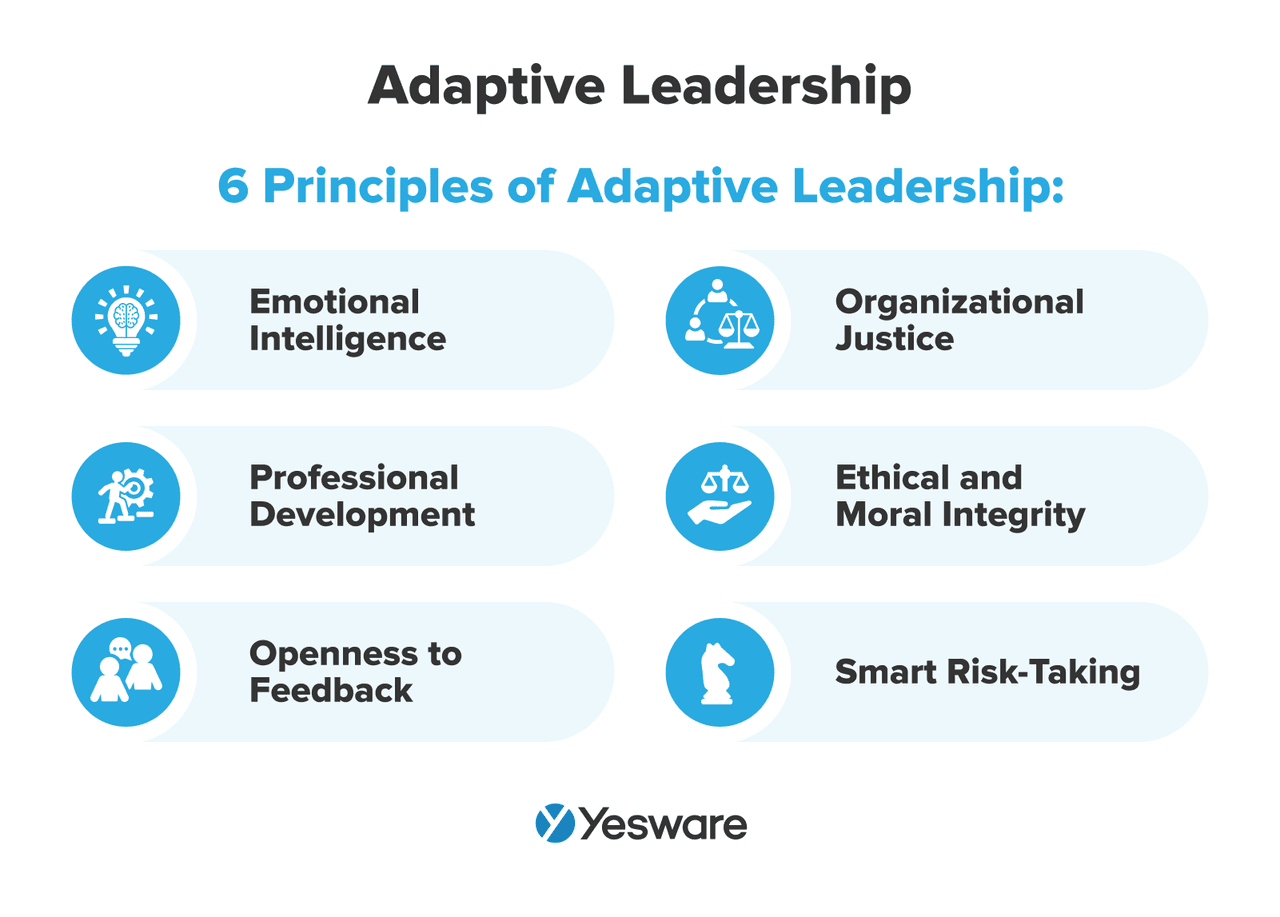
Pro Tip: Grab the ebook below to learn everything you need to become a successful sales manager.
 Sales Management Training GuideEverything you need to know to be a successful sales manager – backed by data and real-world experiences.
Sales Management Training GuideEverything you need to know to be a successful sales manager – backed by data and real-world experiences.
How to Adopt a Sales Mindset
There are many valuable resources that sales professionals can use to acquire a winning sales mindset, including books, sales training programs, and online resources.
Here are a couple of books you may find helpful:
- Mindset: The New Psychology of Success by Carol Dweck
- The Growth Mindset: A Guide to Professional and Personal Growth by Joshua Moore and Helen Glasgow
- Sales EQ: How Ultra High Performers Leverage Sales-Specific Emotional Intelligence to Close the Complex Deal by Jeb Blount
While everyone’s path to developing a sales mindset may be unique, here’s a generalized guide that may be helpful.
1. Self-Assessment and Awareness
The first step to adopting a sales mindset is building self-awareness through self-assessment. Taking the time to reflect on your current mindset can help you identify areas where you need improvement.
Ask yourself questions like, “How do I typically react to rejection or setbacks?” and “Do I view challenges as opportunities for growth, or do they discourage me?”
By reflecting on these questions, you can assess whether your mindset leans toward optimism or self-doubt. Self-awareness is crucial because you need to recognize negative thought patterns before you can change them.
Once you have assessed your current mindset, identify specific areas for improvement.
For example, if you struggle with confidence during a sales presentation, you might focus on taking a deep dive into the products and services that you pitch as well as on developing subject matter expertise.

Practicing confident body language and tonality is another helpful strategy to ensure meetings with clients go well.
A mock call is another example of how sales professionals can boost their client communication.
2. Mindfulness and Mental Conditioning
Sales professionals face daily challenges, from missed quotas to difficult clients, and it can be easy to let negative thoughts creep in. Mental conditioning and mindfulness can help.
Brief History of Mental Techniques
Mental conditioning and mindfulness have roots in ancient practices, going back thousands of years.
Focused breathing for mental strength was used in martial arts, Buddhism, Zen meditation, and by Native Americans and Chinese. Yoga practitioners in India used “pranayama” (breath control) to affect the mind and body for thousands of years.
Indigenous cultures developed traditions of shamanism that employed vivid mental imagery and storytelling to induce altered states of consciousness for spiritual insights and healing. This practice, known as guided imagery, has persisted through the ages.
Adopting Mindfulness and Mental Conditioning in Sales
Here are some practical examples of how sales professionals can incorporate mindfulness and mental conditioning into their daily routines:
Morning Mindfulness Ritual
Start each day with a 5-10 minute meditation or breathing exercise. This could involve sitting quietly, focusing on your breath, and setting positive intentions for the day ahead. This helps center your mind and reduce stress before diving into work.
Pre-call Mindfulness
Before an important sales call or meeting, take 2-3 minutes to practice mindful breathing. Focus on taking slow, deep breaths to calm your nerves and clear your mind. This helps you to be fully present and attentive during the interaction.
Active Listening Practice
During client conversations, consciously focus on being fully present and listening without interruption. Notice when your mind starts to wander or when you’re tempted to interject, and gently bring your attention back to what the client is saying.
Mindful Breaks
Instead of scrolling through your phone during breaks, take a short mindful walk which includes paying attention to your surroundings, the sensation of walking, and your breathing patterns. This helps reset your mind between tasks.
Gratitude Journaling
At the end of each workday, write down 3 things you’re grateful for related to your sales work. This could include successful calls, helpful colleagues, or learning opportunities. This practice helps maintain a positive mindset.
Visualization Exercises
Before important presentations or pitches, spend a few minutes visualizing a successful outcome. Imagine yourself speaking confidently, answering questions effectively, and closing the deal. This mental rehearsal can boost confidence and performance.
Mindful Email Management
Instead of constantly checking emails, set specific times for email management. When you do check emails, give each one your full attention before moving on to the next. This reduces stress and improves focus.
Body Scan Relaxation
During stressful moments, take a minute to do a quick body scan. Start from your toes and work your way up, consciously relaxing each part of your body. This helps release tension and refocus your mind.
Mindful Goal-Setting
When setting sales targets, take time to visualize not just the end goal, but the process of achieving it. This helps create a more realistic and achievable plan, reducing anxiety about hitting targets.
Post-rejection Reflection
After facing rejection, take a moment to practice self-compassion. Acknowledge any negative feelings without judgment, then consciously shift your focus to lessons learned and future opportunities.
3. Continuous Learning and Development
A positive sales mindset thrives on the belief that you can always improve and grow. Cultivating a mindset of continuous learning and development is critical to long-term success in sales.
Sales is a field where learning never stops—new techniques, technologies, and market conditions emerge constantly, and staying ahead of the curve requires dedication.
10 Behaviors to Master Your Sales Mindset
1. Growth Mindset
Instead of seeing obstacles as roadblocks, see them as learning experiences. Every rejection, missed target, or challenging client interaction becomes an opportunity to refine skills and build resilience.
Seeking out constructive feedback and regularly asking for input from peers, managers, and even clients can help you uncover areas for improvement.
2. Goal-Oriented
Setting SMART goals (Specific, Measurable, Achievable, Relevant, and Time-bound) helps ensure that your objectives are clear and attainable.

Regularly tracking your sales goals allows you to measure progress and adjust your approach as needed. If you’re falling behind, it’s essential to reassess your strategy and make necessary changes to stay on track.
3. Embrace Strengths
One of the most effective ways to master your sales mindset is to leverage your unique strengths. Recognizing and using your strengths can give you a competitive edge while also making it easier to identify areas where you need improvement.
4. Resilience
Having resilience means being able to bounce back from disappointments and continue pushing forward. This is especially important in sales where sales representatives may frequently feel ignored and unvalued.
Pro Tip: Yesware’s automated email campaigns allow sales professionals to practice resilience by streamlining the follow-up process and reducing the emotional toll of unanswered emails. With automated follow-ups, sales reps can distance themselves from the discouraging feeling of being ignored or unappreciated when their initial outreach goes unanswered.

5. Active Listening
It is widely accepted that active listening skills empower sales professionals to outperform others.
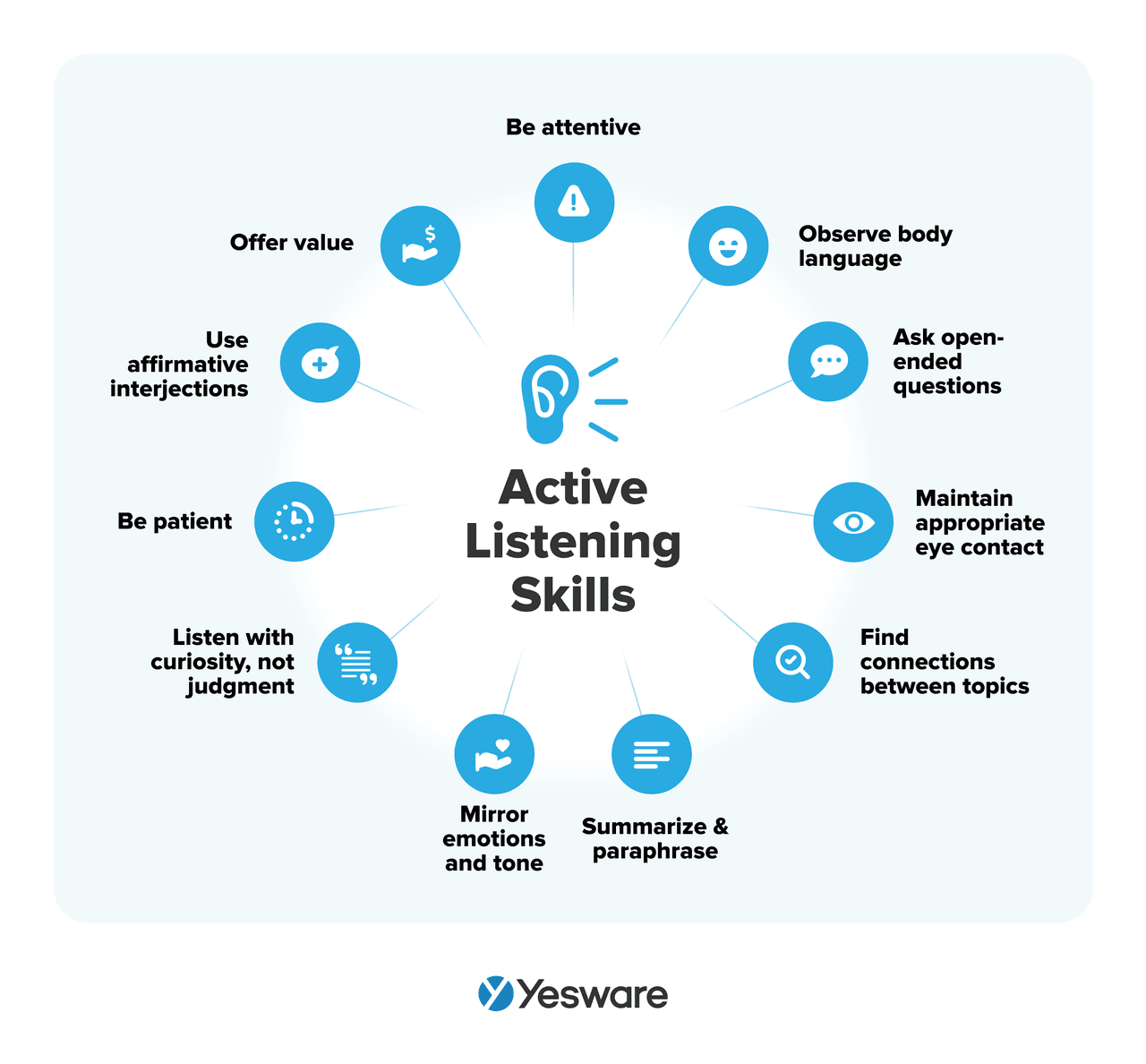
By listening carefully to your clients, you can tailor your pitch to address their specific pain points. Active listening not only helps you close more deals, but it also strengthens relationships and builds trust.
Here are some practical tips on how to implement active listening skills in your daily routine:
- Give your full attention by putting away distractions like phones or laptops, maintaining eye contact, and using body language to show you’re engaged.
- Focus on understanding, not responding by resisting the urge to think about your response while the customer is still speaking and listening to understand their perspective, not to formulate your rebuttal.
- Ask clarifying questions by using open-ended questions to encourage the customer to elaborate.
- Ask follow-up questions to ensure you fully understand customers’ needs and concerns.
- Pay attention to non-verbal cues that can give insights into customers’ emotions.
- Practice empathy by acknowledging the customers’ emotions and perspectives.
- Jot down key points to help you remember important details and review your notes after the conversation to reinforce your understanding.
- After each interaction, consider what you learned and how you could improve your listening.
6. Embraces New Tools
Staying open to new sales tools and technologies can improve efficiency freeing up more time for professional development.
Sticking to the same sales tactics even if they don’t yield results is counterproductive. AI in sales can provide you with the data necessary to ensure the success of your sales strategy.
For example, using sales tools, you could gather insights into whether your prospects prefer sales engagement materials in the form of written content or video.
Pro Tip: Tools like Yesware can streamline sales processes with email tracking and analytics. For example, sales professionals can conduct A/B testing by sending out emails with written content to one sample of prospects and video materials to another sample and measuring which type of email has higher open rates.

7. Accountability
Consider taking ownership of your successes and failures. This self-awareness can help you stay focused, learn from your mistakes, and grow professionally.
Here are some tips on how you could incorporate accountability into your daily routine:
- Create a personal scorecard:
- Develop a weekly or monthly scorecard that tracks your key performance indicators.
- Include both leading indicators (number of calls made, emails sent, meetings scheduled, new prospects added to pipeline) and lagging indicators (monthly/quarterly revenue goals, number of deals closed, average deal size).
- Conduct regular self-assessments by setting aside time each week to honestly evaluate your performance.
- Use time-blocking techniques:
- Schedule specific times for sales prospecting, lead capture, cold outreach, follow-ups, and other key activities.
- Hold yourself accountable to stick to your planned schedule.
8. Building Rapport
People do business with those they trust. By building rapport with your clients, you can establish trust and develop long-lasting partnerships.

9. Thinking Long Term
Sales is not just about closing the deal—it’s about long-term customer satisfaction and building lasting relationships. Successful sales professionals focus on creating value that extends beyond the immediate sale.
Prioritizing customer needs over short-term gains ensures that you foster loyalty and repeat business. Happy customers are more likely to refer you to others and become brand advocates.
10. Adaptivity
Being adaptive means being flexible and open to changing circumstances, whether it’s a shift in market trends or new customer demands.
Here’s a real-life scenario illustrating how sales professionals can stay adaptive.
A sales professional, Alex, works for a tech company that sells software solutions to businesses. Recently, Alex noticed a shift in customer preferences towards cloud-based solutions due to increased remote work trends.
To stay adaptive and maintain sales performance, Alex employs several strategies:
- Research and Learning: Alex dedicates time each week to research industry trends and customer feedback. By staying informed about the latest developments in cloud technology, Alex can anticipate customer needs and tailor his sales approach accordingly.
- Flexible Communication: Recognizing that different clients have varying communication preferences, Alex adapts his style. For some clients, he uses detailed emails with technical specifications, while for others, he opts for brief phone calls or video meetings to discuss key benefits.
- Feedback Loop: After each client interaction, Alex seeks feedback on what resonated and what didn’t. This helps him refine his approach and improve future engagements.
- Continuous Skill Development: Alex attends webinars and training sessions on cloud technology and sales techniques to enhance his expertise.
- Embracing Technology: To streamline his workflow and better manage client relationships, Alex leverages a CRM strategy.
How to Overcome Rejection or Setbacks in Sales
Adopting a strong sales mindset empowers sales professionals to navigate any sales challenges with ease.
Rejection is an inevitable part of any sales career, but it doesn’t have to be a roadblock. Successful sales professionals know that setbacks are not a reflection of their worth but an opportunity to learn, grow, and refine their approach.
One of the most important steps in overcoming rejection is shifting your perspective. Rejection is not a personal failure; it’s simply feedback that can guide you toward improvement. Instead of internalizing it, view each “no” as an opportunity to better understand your customers, identify what didn’t work, and adjust your approach for the next conversation.
Lean on your mentors or colleagues for valuable advice and a fresh perspective. Sometimes, an outside view can help you see the bigger picture and discover opportunities for growth you may have overlooked.
When you’re feeling discouraged, take time to revisit past wins. Reminding yourself of times when you closed a difficult deal or exceeded your sales goals can boost your confidence and help you remember that setbacks are temporary.
Sales can be a high-pressure career, and it’s easy to get wrapped up in the day-to-day challenges. Make sure to balance your work with activities that recharge you, whether it’s spending time with loved ones, exercising, or pursuing a hobby.
How to Leverage Yesware to Enhance Your Sales Mindset
Analytics and Insights
One of the most valuable aspects of Yesware is its ability to deliver in-depth reporting and analytics, and insights into your sales interactions.
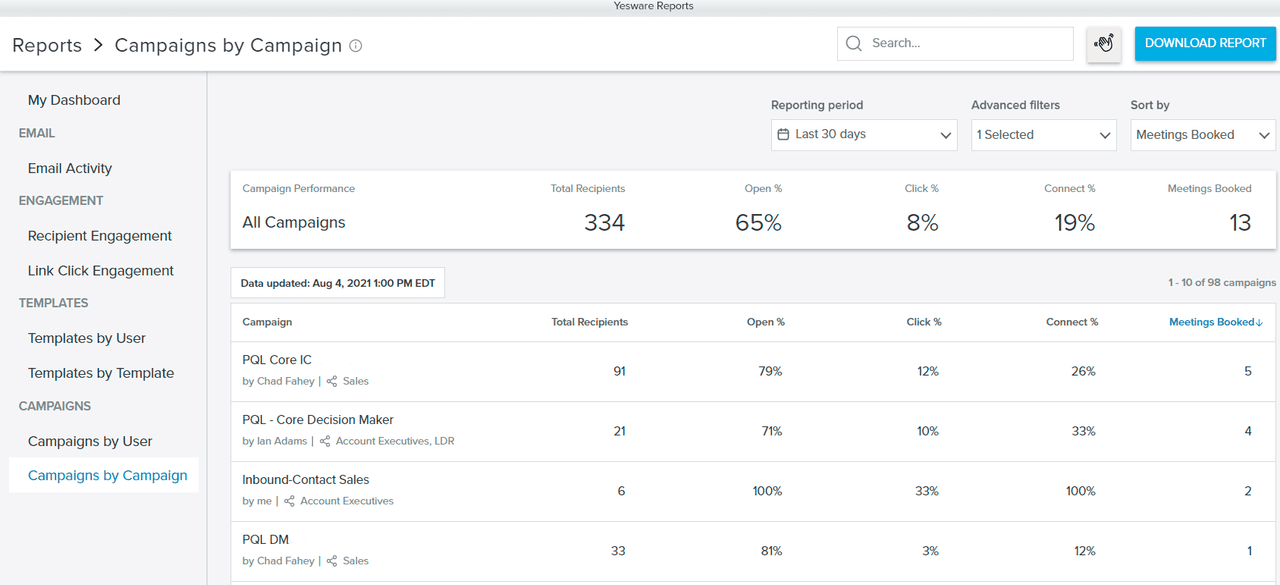
With Yesware’s email tracking, you can monitor when a prospect opens your email, clicks on links, or engages with attachments. This real-time data enables you to understand what resonates with your audience and adjust your approach accordingly.
![]()
Time Management and Productivity
Staying organized helps maintain a strong sales mindset, especially when juggling multiple prospects and tasks. Yesware offers several features designed to boost productivity and streamline time management.
Yesware’s Meeting Scheduler integrates seamlessly with Gmail and Outlook calendars facilitating meeting scheduling without the back-and-forth.
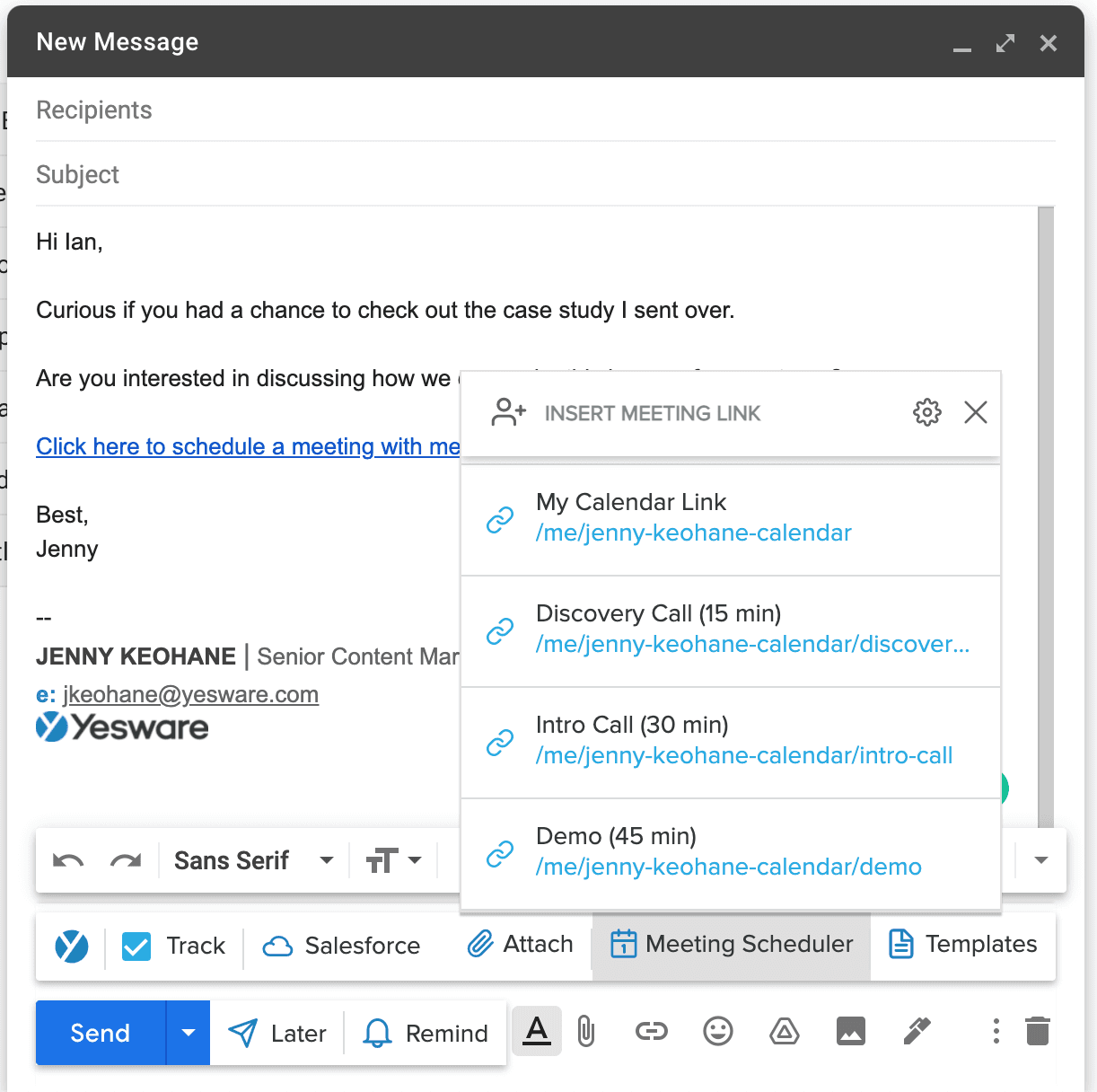
Improvement
By analyzing email performance and engagement metrics with Yesware’s reporting and analytics, you can determine what works and what doesn’t in your sales outreach.
For instance, if a particular email campaign has a low response rate, you can dive deeper into the data. Was the subject line ineffective? Did the content fail to engage? With this feedback, you can tweak your future messaging to improve your chances of success.
Conclusion
A strong sales mindset is essential for handling the challenges of today’s sales landscape. Sign up for Yesware today for free and take the first step toward mastering your sales mindset.
Sales Mindset FAQs
1. What is a sales mindset?
A sales mindset is the mental framework that shapes how sales professionals approach challenges, build relationships, and achieve results. It emphasizes confidence, resilience, adaptability, and customer focus to drive long-term success in sales.
2. Why is a sales mindset important for success?
A strong sales mindset helps you stay motivated during setbacks, adapt to change, and maintain a positive outlook. This resilience directly impacts your ability to close deals and build lasting client relationships.
3. How can I develop a winning sales mindset?
Start with self-assessment, adopt a growth mindset, practice mindfulness, and commit to continuous learning. Tools like Yesware can support this process by tracking performance and identifying areas for improvement.
4. What’s the difference between a growth mindset and a fixed mindset in sales?
A growth mindset sees challenges as opportunities to learn, while a fixed mindset avoids challenges and sees abilities as static. Sales professionals with a growth mindset adapt faster and achieve more consistent results.
5. Can a sales mindset help reduce burnout?
Yes. A positive, growth-oriented sales mindset can help you manage stress, view setbacks constructively, and maintain balance—key factors in preventing burnout.
6. How does Yesware support a strong sales mindset?
Yesware offers email tracking, analytics, and meeting scheduling tools that help sales professionals stay organized, identify winning strategies, and focus on the highest-impact activities to keep momentum strong.
7. What daily habits can strengthen my sales mindset?
Practices like gratitude journaling, goal setting, active listening, and mindful breaks can improve focus, confidence, and adaptability. Over time, these habits help build mental resilience.
8. How do I stay positive after repeated rejections?
Reframe rejection as feedback, analyze what you can improve, and recall past wins to restore confidence. Yesware’s engagement insights help you identify what resonates with prospects so you can adjust strategically.
9. What role does confidence play in a sales mindset?
Confidence reassures customers that you can deliver solutions. It also helps you communicate persuasively and handle objections with ease, which increases trust and credibility.
10. Can technology help me improve my sales mindset?
Yes. Tools like Yesware automate follow-ups, provide performance insights, and free up time for skill development, allowing you to focus on value-driven activities instead of repetitive tasks.
11. How do I balance optimism with realistic sales targets?
Pair a positive attitude with SMART goals—Specific, Measurable, Achievable, Relevant, and Time-bound. This ensures you stay motivated without losing sight of realistic expectations.
12. How does active listening fit into a sales mindset?
Active listening helps you understand client needs more deeply, tailor your pitch, and build trust. This customer-first approach strengthens both relationships and sales outcomes.
13. Is adaptability part of a sales mindset?
Absolutely. Adaptability allows you to respond effectively to market shifts, client preferences, and new technologies. It’s one of the most valuable traits for sustained sales success.
14. How can I measure progress in developing my sales mindset?
Track performance metrics such as close rates, meeting conversions, and response times. Yesware’s reporting features help you identify growth trends and areas for refinement.
15. What books can help me improve my sales mindset?
Recommended reads include “Mindset” by Carol Dweck, “The Growth Mindset” by Joshua Moore and Helen Glasgow, and “Sales EQ” by Jeb Blount.
16. Can a sales mindset improve team performance?
Yes. When team members adopt a growth-oriented, resilient mindset, they collaborate better, share best practices, and create a culture of continuous improvement.
17. How can mindfulness improve my sales mindset?
Mindfulness practices—like pre-call breathing exercises or visualization—help reduce stress, increase focus, and improve your ability to connect authentically with clients.
18. How do I maintain a strong sales mindset during slow seasons?
Focus on skill-building, reconnect with your network, and analyze your pipeline for hidden opportunities. Yesware’s analytics can highlight prospects worth revisiting.
19. Is building rapport part of a sales mindset?
Yes. Building rapport fosters trust, makes conversations more natural, and lays the groundwork for long-term customer relationships, which can lead to repeat business.
20. How can I adopt a sales mindset quickly?
Begin with small, consistent actions—set clear goals, practice gratitude, track your progress with tools like Yesware, and actively seek feedback. Consistency builds momentum and lasting change.
Get sales tips and strategies delivered straight to your inbox.
Yesware will help you generate more sales right from your inbox. Try our Outlook add-on or Gmail Chrome extension for free, forever!
Related Articles
Casey O'Connor
Casey O'Connor
Casey O'Connor
Sales, deal management, and communication tips for your inbox

